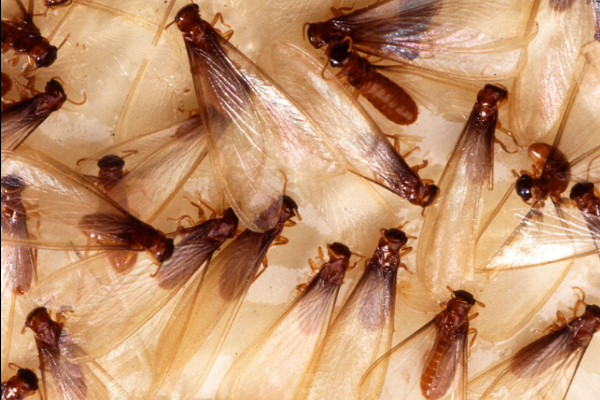It’s termite swarming season. If swarming termites emerge from areas in and around your home, do not panic! A termite swarm is simply an environmental event in which certain conditions trigger winged termites to simultaneously fly from their nest. Termites swarm for a very short amount of time, usually less than 30 minutes, on a moist, warm day. Even if you don’t catch the swarm, discarded wings (that look like fish scales) are also evidence.
A swarm basically means its termite mating season. Once matched, the “royal couple” burrows into the ground where the queen begins to lay eggs.
Other signs you may have termites:
- Hollow-sounding wood: Termites prefer to be in dark, humid environments, so they do not typically feed on the surface of wood, where they would be visible to the human eye. In fact, the wood’s surface might appear smooth, even if termites are inflicting damage. If wood sounds hollow when tapped, it may be because termites are eating the wood from the inside out.
- Cracked or distorted paint on wood surfaces: Swarming drywood termites can enter through openings smaller than the edge of a dime, so monitor and seal any cracks in the home’s foundation and near roof siding, vents and windows.
- Mud tubes on exterior walls: Subterranean termites build mud tubes on surfaces, such as a home’s foundation, to provide moisture while they are searching for food. Store mulch, firewood and wood chips away from the home to avoid creating moisture-rich habitats for termites to survive and thrive.
- Frass: Drywood termites produce wood-colored droppings called frass as they eat their way through infested wood. Keep gutters, downspouts and crawl spaces free of debris and cellulose materials to prevent food sources for termites.
For peace of mind, have a professional come out to do a free pest control inspection to see if you’re at risk.


